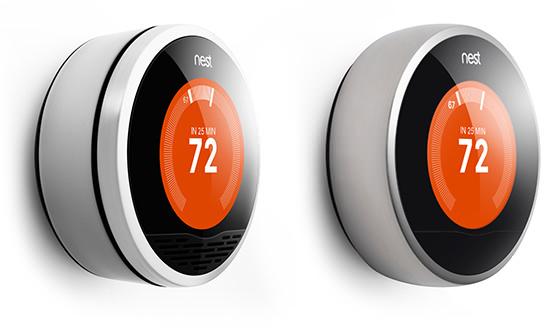Nest Learning Thermostat gets update, learns to compensate for sunlight
Nest, makers of the popular Learning Thermostat, have pushed out an update for their device, adding the ability for the thermostat to adjust its behavior to sunlight, as well as other new features.
Owners of first or second-generation Nest devices, if they have their thermostats hooked up to Wi-Fi, will automatically receive the version 3.5 update in the next few days, according to a post on the Nest blog. That update will allow the thermostat to use its built-in light sensor to detect when it is in direct sunlight and to adjust its temperature settings accordingly. The feature, dubbed Sunblock, will turn on after at least one day of Nest being in direct sunlight.
The update also brings the ability to set Nest to run a fan all night and turn off in the morning or to run to any other user specifications, thanks to Advanced Fan Control. Other new features include Cool to Dry, in which Nest uses its humidity sensor to detect humidity levels and turn on the air conditioner when needed; Enhanced Auto-Away, which allows the thermostat to better understand your schedule; and Auto-Tune, which finds opportunities to save energy and helps users take advantage of them. Specific information on each of the new features is available on Nest's site.
Nest also announced that it would be updating the Nest Mobile app for iOS and Android. Those updates are aimed at making changing the temperature more natural, more like turning the ring on the Nest itself. The updates will also bring the ability for Nest to message users when they need to change their filters or perform some other action.
Monday's announcements are in keeping with what Nest founder Matt Rogers recently said with regard to keeping the device fresh and increasingly capable. Since thermostats are meant to be put in a home and to last for years, the company will be looking to expand capabilities not through continual hardware updates, but instead through regular software updates.
"We don't expect people to buy a new Nest every year," Rogers said in February. "It's not like a smartphone. We don't expect our users to do that. These things should stay for five or ten years, so we're relying a lot on software updates, going forward. We're going to have hardware updates, but a lot of our changes are going to come through software."
 Kevin Bostic
Kevin Bostic











 Andrew Orr
Andrew Orr
 Sponsored Content
Sponsored Content
 Malcolm Owen
Malcolm Owen

 William Gallagher
William Gallagher

 Mike Wuerthele
Mike Wuerthele
 Christine McKee
Christine McKee







